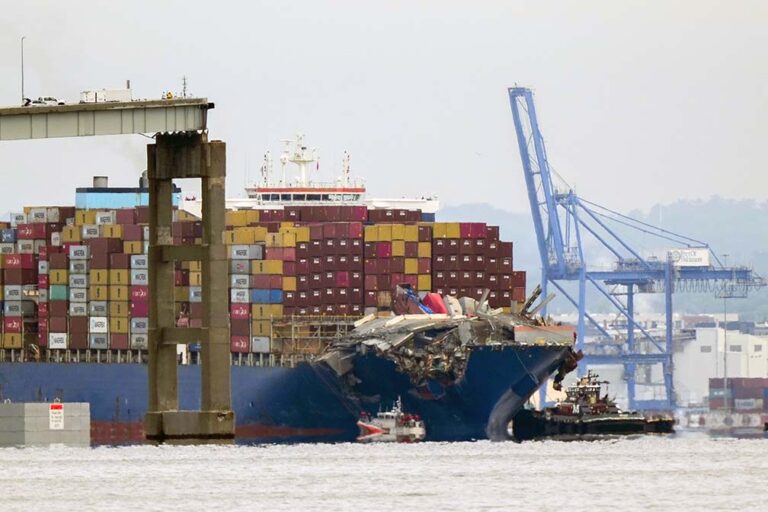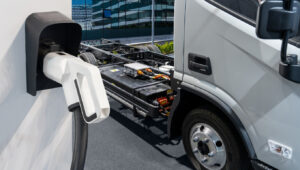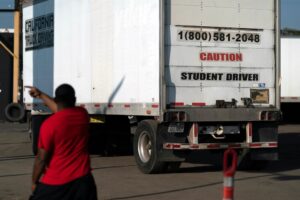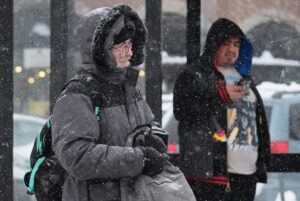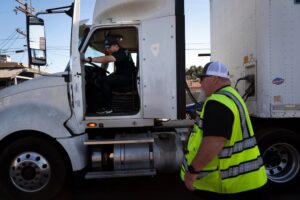BALTIMORE — Researchers at Johns Hopkins University in Baltimore are assessing the country’s bridges to determine the likelihood of another disaster like the one that collapsed the Francis Scott Key Bridge.
The team includes students and faculty members and will focus on large bridges near major ports of entry, officials said in a news release Wednesday.
“We need to know now, not five or 10 years from now, whether there is an outsize risk to bridges across the country,” said team leader Michael Shields, an engineer specializing in risk assessment. “The Key Bridge collapse was a wake-up call.”
The steel span crumbled in an instant after the container ship Dali lost power and crashed into one of its supporting columns shortly after leaving Baltimore’s port on March 26. Six members of a roadwork crew plunged to their deaths.
Experts and officials have noted a number of factors that made the bridge vulnerable, including minimal pier protection that hadn’t been improved in recent decades even as cargo ships grew larger and more imposing.
“Clearly the risk to the Key Bridge was very different in 2024 than it was in 1977 when the bridge opened,” Shields said. “But we don’t currently understand that risk.”
The researchers will examine whether other bridges are similarly vulnerable by building models to determine the probability of a ship deviating from course and causing catastrophe in or around major ports.
Johns Hopkins officials said they hope policymakers will use the findings of their assessment to inform future investment decisions and prioritize infrastructure safety upgrades. They plan to release preliminary findings by the end of the summer, with the complete assessment expected to take about a year to complete.
“Between the exponential growth of mega freight ships and the surge in global shipping traffic, many of our bridges simply weren’t built to withstand the pressures of today’s maritime landscape,” said team member Rachel Sangree, a structural engineer and former bridge inspector.
The National Transportation Safety Board, a federal oversight agency that is investigating the collapse, said in its preliminary report that the Dali sailed right past a protective concrete piling — also known as a dolphin — before bringing down the bridge.
Officials said they are assessing whether pier protection needs to be improved on other Maryland bridges, particularly the Chesapeake Bay Bridge near Annapolis, which links Baltimore and Washington to Maryland’s Eastern Shore. Such upgrades are often very costly.
Speaking before a congressional committee this month, board Chair Jennifer Homendy urged lawmakers to conduct risk assessments on the major bridges in their jurisdictions.
“This could happen in any of your districts,” she said.
The FBI also opened a criminal investigation into the circumstances leading up to the Key Bridge collapse.
Two tugboats guided the Dali out of Baltimore’s port, but they peeled off once it entered the main shipping channel in accordance with normal practice, according to the preliminary report. Experts have questioned whether a longer tugboat escort could have kept the wayward ship on course and averted disaster.
But not everyone agrees the Key Bridge could have been saved. U.S. Transportation Secretary Pete Buttigieg, who visited Baltimore soon after the collapse, said there’s a lot of debate among engineers about “whether any of those features could have had any role in a situation like this.”
The Key Bridge was constructed in the 1970s to connect industrial maritime communities north and south of downtown Baltimore. It became a symbol of the city’s proud working-class history and its burgeoning port.
The collapse halted most maritime traffic through the port for several weeks and disrupted East Coast trucking routes.
Last week, cleanup crews were able to refloat the Dali and guide it back to port. Officials say they’re on track to fully reopen the port’s main channel by June 10.
Plans to replace the bridge are in the works, with a projected 2028 completion date and a nearly $2 billion price tag, officials have said. Federal funding, insurance proceeds and other reimbursements will bring a variety of resources toward the rebuild and recovery effort.
A report released Wednesday by the Maryland Chamber of Commerce highlighted the widespread economic impacts of the bridge collapse and called for increased investment in transportation infrastructure.
The Associated Press is an independent global news organization dedicated to factual reporting. Founded in 1846, AP today remains the most trusted source of fast, accurate, unbiased news in all formats and the essential provider of the technology and services vital to the news business. The Trucker Media Group is subscriber of The Associated Press has been granted the license to use this content on TheTrucker.com and The Trucker newspaper in accordance with its Content License Agreement with The Associated Press.







